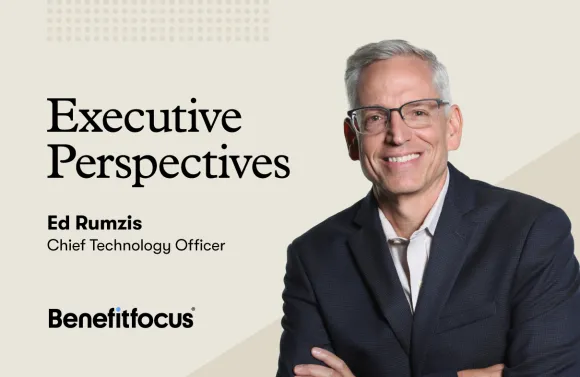
Preventive care programs can be an excellent way to help improve your workforce’s health and wellbeing. That means there’s potential for lower costs for you and your employees, increased productivity and happier lives.
However, convincing employees to engage with preventive care is…not easy. As the CDC explains:
“Engagement involves creating and maintaining a sincere interest and involvement in living a healthy life — at home and at work. Workplace wellness programs are only as effective as the proportion of employees who are truly engaged in the program.”
This post looks at the importance of preventive care from an employer’s perspective and explains how you can improve employee engagement in your programs.
Preventive Care Can Save Lives
The U.S. Department of Health and Human Services (HHS) reports that while preventive care reduces the risk of disease, disabilities and death, relatively few U.S. adults engage with it fully. A study published in 2018 found only 8% of US adults ages 35 and over received all the high-priority preventive care recommended to them.
During and following the pandemic, many people delayed essential preventive care, suggesting that this trend only worsens during difficult times — perhaps because employees have less time and energy to engage with things they deem “non-essential.” According to KFF, the most frequently delayed forms of medical care in 2021 were:
- Dental work (39%)
- Vision care (28%)
- Visits to the doctor (24%)
- Mental health care (17%)
This is not a trend that leads to positive outcomes.
In fact, delayed preventive care is proven to increase the risk of negative health outcomes, making it a suboptimal — albeit understandable — decision that can compound consequences when chronic conditions develop. Chronic disease, not to mention the avoidance of chronic disease intervention, leads to higher costs for both employees and employers, along with reduced productivity, worsening of existing health conditions and personal suffering.
Understanding Preventive Care Consumption
Understanding how your workforce consumes care — both preventive and otherwise — is critical. Without a clear understanding of this, it’s tough to design preventive care programs and incentives that will capture employees’ interest and engagement.
And, as we know, there may be minimal value in a preventive care initiative with low employee engagement.
In particular, understanding health care cost drivers at your organization is essential. While there are some common trends across most workplaces, health care claims trends often differ significantly between organizations — so you need to know what’s creating disproportionate costs within your workforce.
For example, diabetes is a major issue and cost driver for most employers. On average, people diagnosed with diabetes have medical expenditures 2.3 times higher than those without diabetes. Diabetes is also rising at an alarming rate in the U.S., often costing both employers and affected employees a huge amount of money — including costs associated with increased absenteeism and loss of productivity.
As a result, employers are likely to benefit from implementing engaging preventive care initiatives related to diabetes. However, not all medical issues are so consistent across workforces.
While some employers may find their claims data demonstrates high spending on mental health services, others might be more skewed towards physical injuries, specific chronic conditions or something else entirely. These trends could be influenced by workforce age, demographics, industry, the types of work being done and more — making it essential for individual employers to understand their specific workforce and claims data.
Typically, this is done using a technology solution that provides insights into past and current claims data, reporting on the types of conditions that are prevalent within your workforce. Benefitfocus Health Insights is one such solution .
6 Ways to Boost Employee Engagement with Preventive Care
1) Financial incentives
If you want to try to change care consumption behaviors, financial incentives are a good place to start. Since we know employees often don’t engage with preventive care — even when it’s clearly in their best interests — the obvious solution is to make engagement more attractive. It’s the classic “carrot vs. stick" approach.
Common solutions include offering lower premiums and bonuses to employees who engage with preventive care programs. Some employers also use plan design to encourage participation, for example, by offering HDHP/HSA plans where preventive care can be covered immediately upfront at 100 percent with no deductible or copay.
2) Remove hurdles to engagement
There are many reasons why employees may delay preventive care, and some of them are practical. For example, employees only receive so much PTO — and they may not want to spend it in a doctor’s office. To improve uptake, aim to identify these types of barriers and remove them, for example, by offering “extra” PTO for screenings, vaccines, visits, etc.
3) Make it convenient
Employees may want to engage with preventive care, but, depending on their lifestyles, may find it difficult to fit in to a packed schedule. For example, a parent of young children may not have much time to travel for health checkups. Employers can help them tackle this by making certain screenings available at the worksite or through a telemedicine service, if either makes sense for your company and workforce.
In fact, the National Association of Worksite Health Centers reports that are about 1,200 employers currently operating their own onsite clinics across the U.S. And, as discussed in Healthcare IT News, telehealth can help bolster preventive care programs.
4) Access to care
Physicians may be “booked” for weeks in advance, making it tough for employees to arrange appointments. However, there may be relatively little employers can do about this beyond ensuring plans cover enough providers in relevant locations to meet employee needs, and perhaps offering telehealth services.
To maximize engagement, ensure employees — and team leaders or managers — understand the importance of routine appointments such as screenings, and encourage them to book appointments despite the potential wait.
5) Education and communication
The foundation of driving engagement in any benefits program is strong education and communication. Getting this right is a huge topic in its own right, but two points to keep in mind are:
- Balance digital outreach with face-to-face or personal video communication.
- Go beyond “facts and figures” to elicit emotional responses in employees.
The CDC emphasizes the importance of communication and employee involvement in the design and management of wellness programs — including the use of employee focus groups to identify and serve the workforce’s needs.
Beyond this, be sure to develop content specific to preventive care so employees can grasp its importance, not to mention coverage through their employer-sponsored health plan. There are both practical and emotional hurdles to overcome, and it will likely require consistent communication over time to change employee behaviors.
6) Tracking
When designing programs to improve engagement with preventive care, it’s crucial to track success. In reality, there is only one metric that matters — engagement with the preventive care services and programs themselves.
While it can be useful to know whether employees are clicking emailed hyperlinks or watching educational videos, these are not outcomes in themselves unless they reliably lead to increased engagement with preventive care programs.
When implementing new engagement initiatives, look for ways to track their success. For example, if you implement text reminders, you could track:
- Increase in preventive care claims over the following quarter
- Number of employees engaging with in-house preventive care programs within X days or weeks of receiving a reminder
Naturally, your ability to track success will depend on the benefits program and technology present within your organization.
Empower Your Employees (and Your Organization)
Employees who are informed on the importance of preventive care — and find your programs convenient and easy to use — are more likely to engage in the healthy behaviors you’re promoting.
At Benefitfocus, we make it easier for employees to make smarter benefits and health decisions through a connected benefits experience. We also empower employers to provide education and communications, decision support and more to help employees make informed decisions about their health and wellbeing — including preventive care.
Learn about our benefits administration and health care analytics solutions and arrange for a free demo to experience them first-hand.

